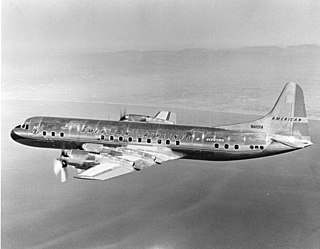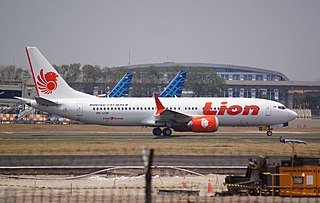Related Research Articles

An emergency position-indicating radiobeacon (EPIRB) is a type of emergency locator beacon for commercial and recreational boats, a portable, battery-powered radio transmitter used in emergencies to locate boaters in distress and in need of immediate rescue. In the event of an emergency, such as a ship sinking or medical emergency onboard, the transmitter is activated and begins transmitting a continuous 406 MHz distress radio signal, which is used by search-and-rescue teams to quickly locate the emergency and render aid. The signal is detected by satellites operated by an international consortium of rescue services, COSPAS-SARSAT, which can detect emergency beacons anywhere on Earth transmitting on the distress frequency of 406 MHz. The satellites calculate the position or utilize the GPS coordinates of the beacon and quickly passes the information to the appropriate local first responder organization, which performs the search and rescue. As Search and Rescue approach the search areas, they use Direction Finding (DF) equipment to locate the beacon using the 121.5 MHz homing signal, or in newer EPIRBs, the AIS location signal. The basic purpose of this system is to help rescuers find survivors within the so-called "golden day" during which the majority of survivors can usually be saved. The feature distinguishing a modern EPIRB, often called GPIRB, from other types of emergency beacon is that it contains a GPS receiver and broadcasts its position, usually accurate within 100 m (330 ft), to facilitate location. Previous emergency beacons without a GPS can only be localized to within 2 km (1.2 mi) by the COSPAS satellites and relied heavily upon the 121.5 MHz homing signal to pin-point the beacons location as they arrived on scene.

Swissair Flight 111 (SR111/SWR111) was a scheduled international passenger flight from John F. Kennedy International Airport in New York City, United States, to Cointrin Airport in Geneva, Switzerland. The flight was also a codeshare flight with Delta Air Lines. On 2 September 1998, the McDonnell Douglas MD-11 performing this flight, registration HB-IWF, crashed into the Atlantic Ocean southwest of Halifax Stanfield International Airport at the entrance to St. Margarets Bay, Nova Scotia, Canada. The crash site was 8 kilometres from shore, roughly equidistant from the small fishing and tourist communities of Peggy's Cove and Bayswater, killing all 215 passengers and 14 crew members on board the MD-11, making the crash the deadliest accident in the history of Swissair and the deadliest accident involving the McDonnell Douglas MD-11. It is also the second-deadliest aviation accident to occur in Canada, behind Arrow Air Flight 1285R.
A distress signal, also known as a distress call, is an internationally recognized means for obtaining help. Distress signals are communicated by transmitting radio signals, displaying a visually observable item or illumination, or making a sound audible from a distance.
Aviation is the design, development, production, operation, and use of aircraft, especially heavier-than-air aircraft. Articles related to aviation include:
The Plessey Company plc was a British electronics, defence and telecommunications company. It originated in 1917, growing and diversifying into electronics. It expanded after World War II by acquisition of companies and formed overseas companies. It was listed on the London Stock Exchange and was a constituent of the FTSE 100 Index. In 1989, it was taken over by a consortium formed by GEC and Siemens which split the assets of the Plessey group.

A flight recorder is an electronic recording device placed in an aircraft for the purpose of facilitating the investigation of aviation accidents and incidents. The device may often be referred to colloquially as a "black box", an outdated name which has become a misnomer—they are now required to be painted bright orange, to aid in their recovery after accidents.
The Marconi Company was a British telecommunications and engineering company founded by Italian inventor Guglielmo Marconi in 1897 which was a pioneer of wireless long distance communication and mass media broadcasting, eventually becoming one of the UK's most successful manufacturing companies.

Marconi Communications, the former telecommunications arm of Britain's General Electric Company plc (GEC), was founded in August 1998 through the amalgamation of GEC Plessey Telecommunications (GPT) with other GEC subsidiaries: Marconi SpA, GEC Hong Kong, and ATC South Africa.
Thales Underwater Systems or TUS is a subsidiary of the French defense electronics specialist Thales Group. It was founded in 2001 and belongs to its naval division. It specializes in the development and manufacturing of sonar systems for submarines, surface warships and aircraft, as well as communications masts and systems for submarines. Its headquarters are located in Sophia Antipolis, France.

American Airlines Flight 320 was a scheduled flight between Chicago Midway Airport and New York City's LaGuardia Airport. On February 3, 1959, the Lockheed L-188 Electra performing the flight crashed into the East River during its descent and approach to LaGuardia Airport, killing 65 of the 73 people on board. Weather conditions in the area were poor, and the aircraft descended through dense clouds and fog. As it approached the runway, it flew lower than the intended path and crashed into the icy river 4,900 feet (1,500 m) short of the runway. American Airlines had been flying the newly-developed Lockheed Electra in commercial service for only about two weeks before the crash, and the accident was the first involving the aircraft type.

The International Cospas-Sarsat Programme is a satellite-aided search and rescue (SAR) initiative. It is organized as a treaty-based, nonprofit, intergovernmental, humanitarian cooperative of 45 nations and agencies. It is dedicated to detecting and locating emergency locator radio beacons activated by persons, aircraft or vessels in distress, and forwarding this alert information to authorities that can take action for rescue. Member countries support the distribution of distress alerts using a constellation of around 65 satellites orbiting the Earth which carry transponders and signal processors capable of locating an emergency beacon anywhere on Earth transmitting on the Cospas-Sarsat frequency of 406 MHz.

Varig Flight 254 was a Boeing 737-241, c/n 21006/398, registration PP-VMK, on a scheduled passenger flight from São Paulo, Brazil, to Belém, capital city of the state of Pará in the country's North Region, on 3 September 1989. The flight had several intermediate stopovers, the last being in Marabá, Pará. Prior to takeoff from Marabá, the crew entered an incorrect heading into the flight computer, flying deep into a remote area of the Amazon jungle. Attempts to reach an alternative airport were unsuccessful and the plane eventually ran out of fuel, crashing during a belly landing in the jungle 1,700 kilometres northwest of Rio de Janeiro. Of the 54 passengers and crew, 12 passengers died and many more sustained serious injuries. The survivors were rescued two days later.

Thai Airways International Flight 261 (TG261/THA261) was a scheduled domestic passenger flight from Bangkok's Don Mueang International Airport to Surat Thani International Airport in Surat Thani, Thailand. The flight was operated by Thai Airways International, the flag carrier of Thailand. On 11 December 1998, the aircraft, an Airbus A310-204 registered in Thailand as HS-TIA, stalled and crashed into a swamp during its landing attempt at Surat Thani Airport. A total of 101 people were killed in the crash.

Adam Air Flight 574 was a scheduled domestic passenger flight operated by Adam Air between the Indonesian cities of Jakarta, Surabaya and Manado that crashed into the Makassar Strait near Polewali in Sulawesi on 1 January 2007. All 102 people on board were killed, making it the deadliest aviation accident involving a Boeing 737-400.

Cougar Helicopters Flight 91 was a scheduled flight of a Cougar Sikorsky S-92A which ditched on 12 March 2009 en route to the SeaRose FPSO in the White Rose oil field and Hibernia Platform in the Hibernia oilfield off the coast of Newfoundland 55 kilometres (34 mi) east-southeast of St. John's, Newfoundland. Of the 18 aboard, only one survived.

Invicta International Airlines Flight 435 (IM435) was a Vickers Vanguard 952, flying from Bristol Lulsgate to Basel-Mulhouse, which crashed into a forested hillside near Hochwald, Switzerland on 10 April 1973. The aircraft somersaulted and broke up, killing 108 people, with 37 survivors. To date, this is the deadliest accident involving a Vickers Vanguard and the deadliest aviation accident to occur on Swiss soil. Many of the 139 passengers on the charter flight were women, members of the Axbridge Ladies Guild, from the Somerset towns and villages of Axbridge, Cheddar, Winscombe and Congresbury. The accident left 55 children motherless and became known in the British media as the Basle air crash.

Aero Flight 217 was a domestic passenger flight from Helsinki, Finland, to Mariehamn in the autonomous territory of Åland, operated by the Finnish flag carrier Aero O/Y. On 8 November 1963, the aircraft serving the flight crashed in poor visibility while attempting to land on a non-precision approach at Mariehamn Airport in the municipality of Jomala, resulting in the deaths of 22 people out of 25 on board. The crash remains the second most deadly aviation accident in Finland, the first being Aero Flight 311 almost two years earlier.

EgyptAir Flight 804 was a regularly scheduled international passenger flight from Paris Charles de Gaulle Airport to Cairo International Airport, operated by EgyptAir. On 19 May 2016 at 02:33 Egypt Standard Time (UTC+2), the Airbus A320 crashed into the Mediterranean Sea, killing all 66 occupants on board.
An emergency locator beacon is a radio beacon, a portable battery powered radio transmitter, used to locate airplanes, vessels, and persons in distress and in need of immediate rescue. Various types of emergency locator beacons are carried by aircraft, ships, vehicles, hikers and cross-country skiers. In case of an emergency, such as the aircraft crashing, the ship sinking, or a hiker becoming lost, the transmitter is deployed and begins to transmit a continuous radio signal, which is used by search and rescue teams to quickly find the emergency and render aid. The purpose of all emergency locator beacons is to help rescuers find survivors within the so-called "golden day", the first 24 hours following a traumatic event, during which the majority of survivors can usually be saved.

Lion Air Flight 610 (JT610/LNI610) was a scheduled domestic passenger flight from Soekarno–Hatta International Airport, Tangerang, to Depati Amir Airport, Pangkal Pinang, in Indonesia. On 29 October 2018, the Boeing 737 MAX operating the route, carrying 181 passengers and 8 crew members, crashed into the Java Sea 13 minutes after takeoff killing all 189 occupants on board. It was the first major accident and hull loss of a 737 MAX, a then recently-introduced aircraft. It is the deadliest accident involving the Boeing 737 family. One diver also died during recovery operations.
References
Notes
- 1 2 3 4 5 6 7 8 9 Survivors
- 1 2 3 4 Hasnain
- 1 2 3 Extraordinary
- ↑ Ralph Nader; Nadia Milleron; Duff Conacher (1992). Canada Firsts . McClelland & Stewart. p. 114. ISBN 978-0-7710-6713-6.
- 1 2 3 Sear, 'Canadian Tumbling Aerofoil Housing Unit'
- ↑ "Flight Recorders", Flight International, 3 July 1969, pg. 25
- ↑ "Leigh's remains split among several", Canadian Electronics, 1 October 1990
- ↑ "503 Series of Deployable Beacon", HR Smith
Bibliography
- Sadiq Hasnain, "The Crash Position Indicator" Archived 24 September 2015 at the Wayback Machine , IEEE, April 1979
- (Extraordinary), "Extraordinary Inventor", U of A Engineer Magazine, Winter 2005
- (Survivors), "Saving Survivors by Finding Fallen Aircrafts[sic]", NRC, 2008-03-05
- Jeremy Sear, "The ARL ‘Black Box’ Flight Recorder", University of Melbourne, October 2001